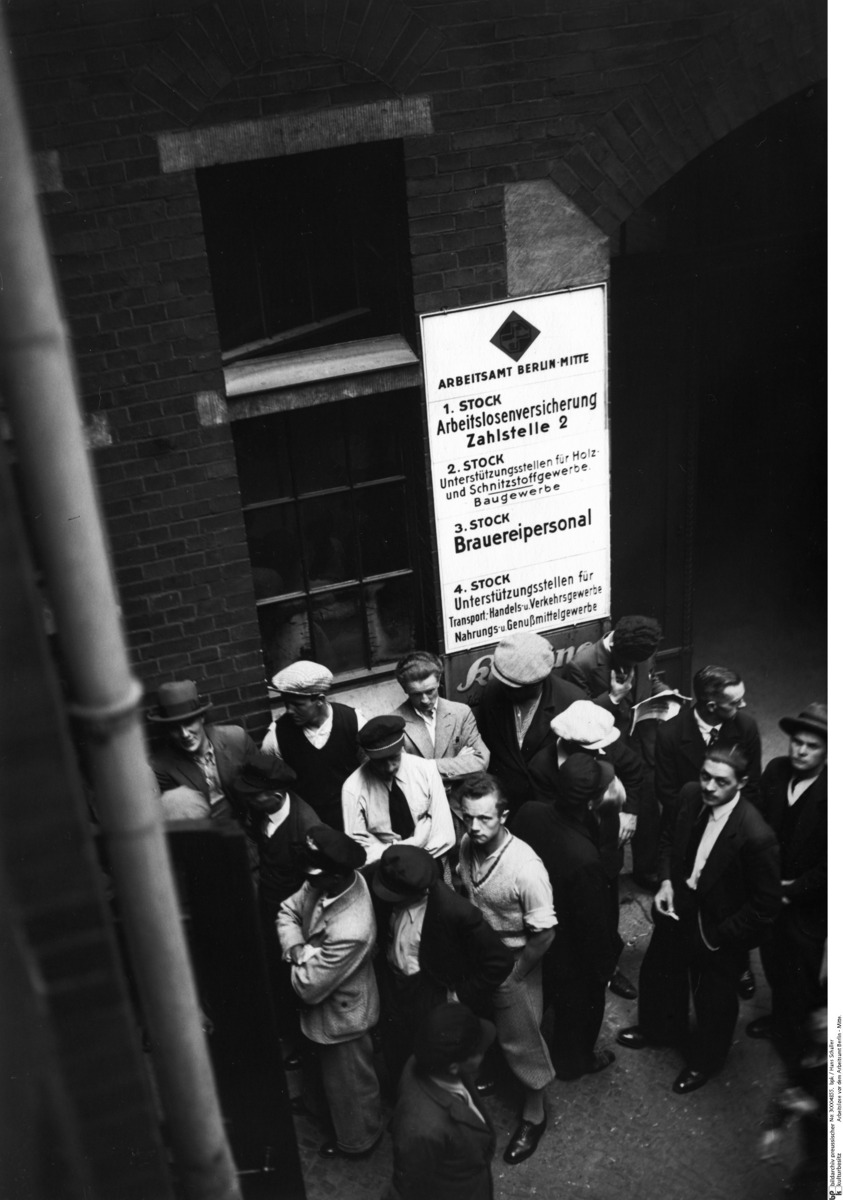Abstract
The persistent worldwide depression and the mass unemployment
associated with it were among the main catalysts for the general
radicalization of the political climate in Germany—a process from which
the NSDAP benefited more than any other party. In 1932, when the crisis
reached its peak, about 6 million people were registered as unemployed
in Germany. Together with their families, they constituted at least
one-fifth of the population, and the true number of those affected was
probably higher. Women, for instance, often failed to register with the
authorities when they were dismissed from positions. Furthermore,
millions of workers who kept their jobs often had to accept drastic
decreases in their salaries and hours. No sector of the economy and no
stratum of the population was spared, but industry was hit particularly
hard. Between 1928 and 1932, the number of unemployed in Berlin (then
Germany’s largest industrial center) rose from 133,000 to 600,000; in
Hamburg, from 32,000 to 135,000; and in Dortmund from 12,000 to
65,000.
